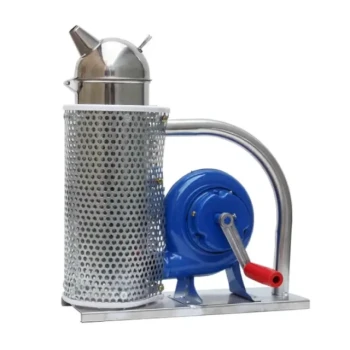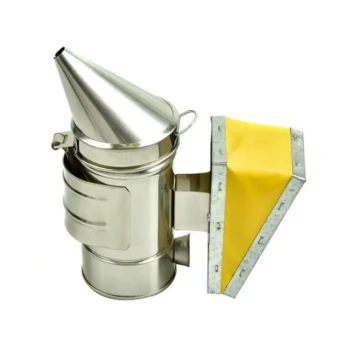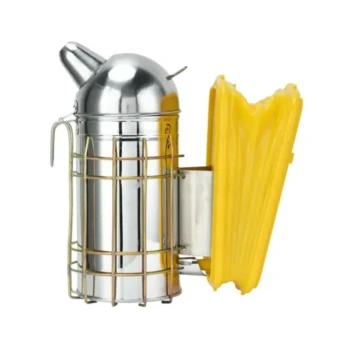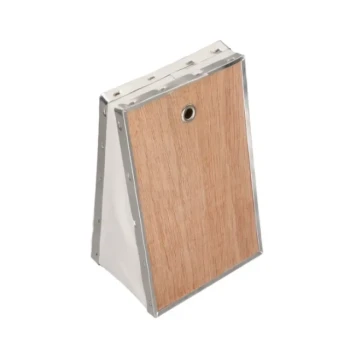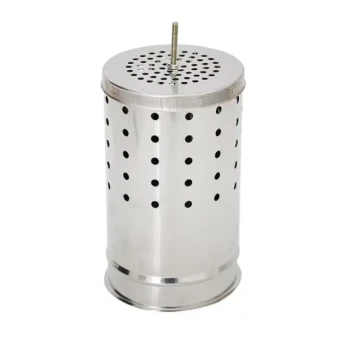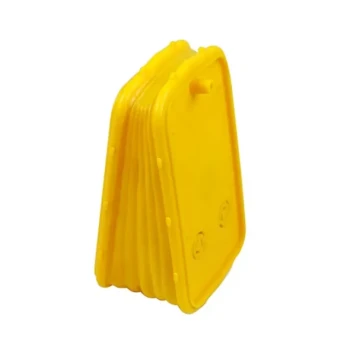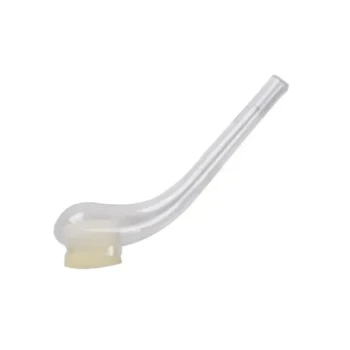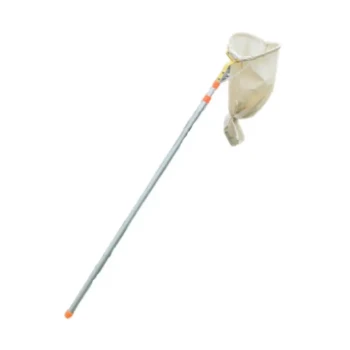At its core, a bee smoker contains two things: a simple mechanism for controlled combustion and a specific type of fuel. The physical device consists of a fire chamber to hold the fuel, bellows to supply air, and a spout to direct the smoke. The fuel itself is typically a slow-burning, natural material like burlap, pine needles, or compressed cotton.
The purpose of a bee smoker is not to create a large fire, but to generate a steady supply of cool, white smoke. Its entire design—from the restricted airflow of the fire chamber to the pump-action bellows—is engineered to maintain a smoldering fire that calms bees without harming them.
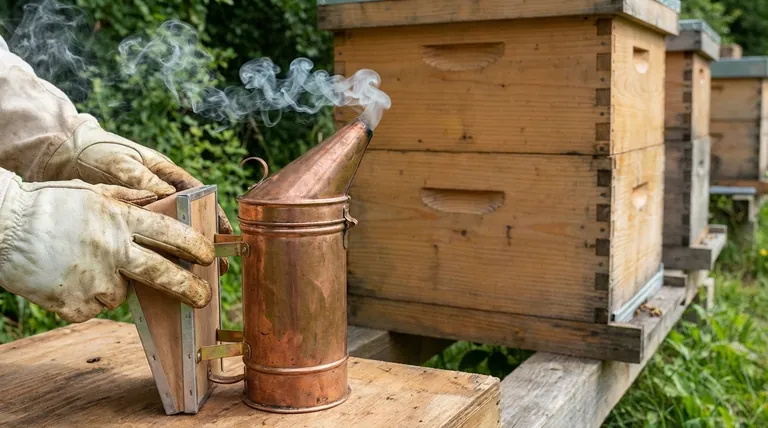
The Anatomy of a Bee Smoker
A smoker is a remarkably simple yet effective tool. Understanding its three primary components reveals how it achieves its purpose.
The Fire Chamber
This is the main body of the smoker, usually a stainless steel cylinder where the fuel is held and burned. It often contains a perforated grid or inner cup at the bottom, which holds the fuel up off the base to allow for better airflow from below.
The chamber is designed to restrict oxygen, preventing the fuel from bursting into open flame and instead forcing it to smolder slowly.
The Bellows
The bellows is a manually operated air pump attached to the base of the fire chamber. When you squeeze the bellows, it forces a jet of air into the bottom of the chamber.
This targeted oxygen supply is the control mechanism. A few gentle puffs will stoke the embers and produce thick smoke, while leaving it alone allows the fire to burn at a minimal, smoldering rate.
The Lid and Spout
The conical lid on top of the fire chamber funnels the smoke into a narrow spout, allowing the beekeeper to direct it precisely. The lid is hinged, enabling you to add more fuel as needed during a hive inspection.
Essential Safety Features
Most quality smokers include a wire heat cage surrounding the fire chamber. This is a critical safety feature that prevents you from burning your hands or melting your bee suit.
They also typically feature a small hook, which allows you to hang the smoker on the side of a hive box or a carrying caddy, keeping it accessible but safely out of the way.
Choosing the Right Fuel
The type of fuel you use is just as important as the smoker itself. The goal is always to produce a thick, cool smoke that is pleasant and non-toxic.
The Goal: Cool, Plentiful Smoke
Hot smoke or open flames will agitate bees and can easily injure them. The ideal fuel lights easily, smolders for a long time, and produces the kind of smoke that effectively masks the bees' alarm pheromones.
Starters (Kindling)
To get the fire going, you need a material that ignites quickly. Common starters include crumpled newspaper, cardboard egg cartons, untreated burlap, or natural dryer lint (from cotton clothing).
Main Fuels (Long-Burn)
Once you have a small flame from your starter, you add a slower-burning main fuel on top. This is what will generate smoke for the duration of your work.
Excellent choices include pine needles, rotten or punky wood, hessian (burlap) fabric, or commercial fuels made from compressed cotton or pulped paper.
Common Pitfalls to Avoid
Using a smoker is simple, but a few common mistakes can render it ineffective or even dangerous.
Mistake #1: Using Inappropriate Fuel
Never burn plastic, treated wood, pressure-treated lumber, or any material that might release toxic chemicals. This is harmful to the bees, can contaminate your honey, and is a health hazard for you.
Mistake #2: Creating Hot Smoke or Flames
Over-pumping the bellows can create a fire that is too hot. If you see flames coming out of the spout, you are pumping too aggressively. The goal is a gentle smolder, not a blowtorch.
Mistake #3: Using Wet or Damp Fuel
Damp fuel is difficult to light and produces a steamy, acrid smoke that can irritate bees rather than calm them. Always use dry, well-seasoned fuel for the best results.
Mistake #4: Letting the Smoker Go Out
During an inspection, it's easy to set the smoker down and forget about it. Give the bellows a gentle puff every five to ten minutes to ensure the embers stay lit, so it's ready when you need it.
How to Apply This to Your Work
Properly using your smoker is the first step to a calm and productive hive inspection.
- If your primary focus is a successful start: Begin with a small handful of starter material (like newspaper), light it, and gently puff the bellows until you have a small, steady flame before adding your main fuel.
- If your primary focus is calming the hive: Apply a few gentle puffs of cool, white smoke at the hive entrance 2-3 minutes before opening it, then use occasional puffs across the top of the frames as you work.
- If your primary focus is safety and efficiency: Use the built-in hook to hang your smoker on the hive box, and always ensure your fuel is completely extinguished in a fire-safe container after you are finished.
Mastering the bee smoker is a fundamental skill that transforms your relationship with your bees from confrontational to cooperative.
Summary Table:
| Component | Purpose | Key Feature |
|---|---|---|
| Fire Chamber | Holds fuel for controlled smoldering | Perforated grid for airflow |
| Bellows | Supplies oxygen to maintain smoke | Manual pump for precise control |
| Lid & Spout | Directs cool, white smoke | Hinged for easy refueling |
| Fuel Types | Generates bee-calming smoke | Natural materials like burlap or pine needles |
Ready to Master Your Beekeeping? Equip your apiary with reliable, professional-grade bee smokers and supplies from HONESTBEE. We specialize in wholesale solutions for commercial beekeepers and equipment distributors, ensuring you have the tools for safe, efficient hive inspections. Contact our team today to discuss your needs and elevate your beekeeping operations!
Visual Guide
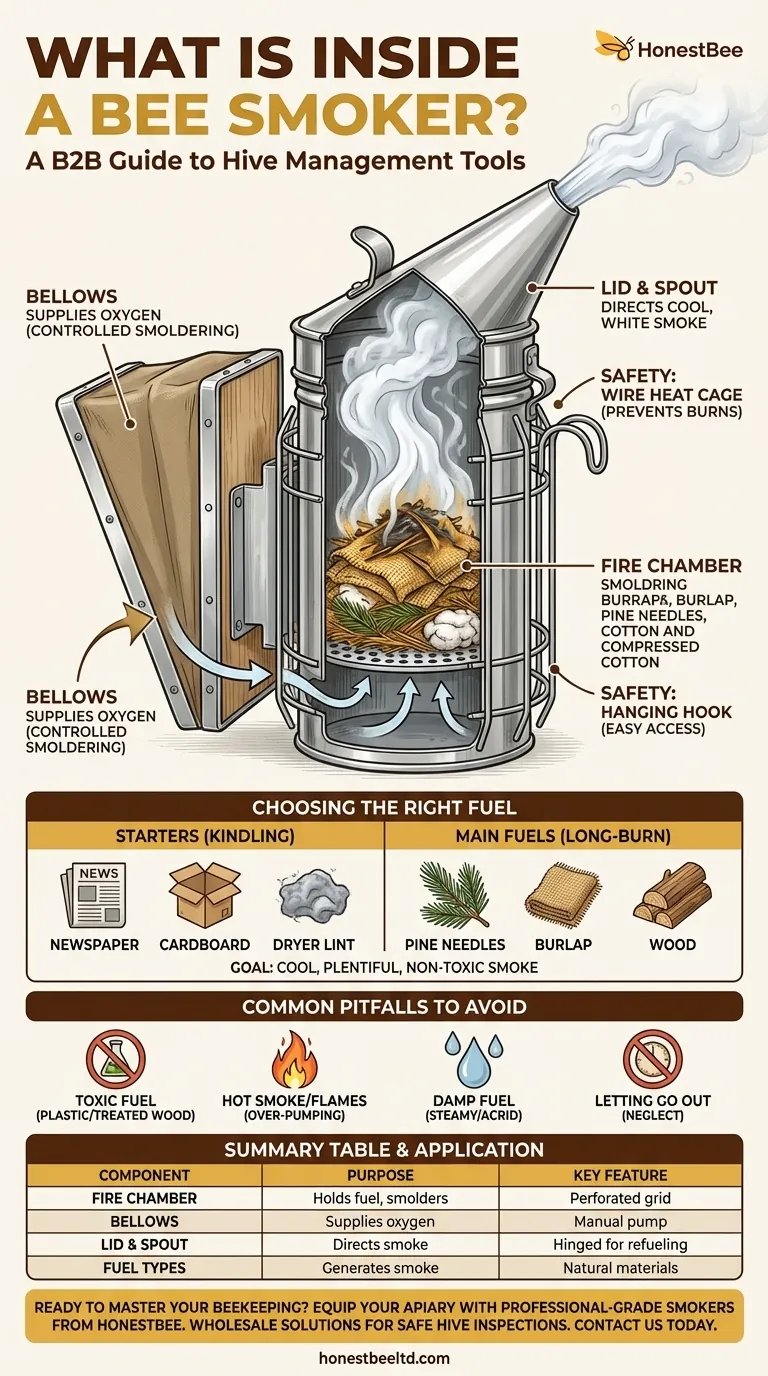
Related Products
- Premium Traditional Copper Bee Smoker with Bellows
- Stainless Steel Honey Bee Smoker Hive and Honeycomb Smoker for Beekeeping
- European Stainless Steel Bee Smoker for Honey Bee Hive
- Stainless Steel Electric Beehive Smoker for Beekeeping and Bee Keeper Use
- Electric Bee Smoker European Style Bee Hive Smoker for Beekeeping
People Also Ask
- What happens to bees when they sense smoke? Unlock the Secret to Calm Hive Inspections
- What is a Smoker and how is it used in beekeeping? The Essential Tool for Calm, Safe Hive Inspections
- What are the main parts of a bee smoker? Essential Components for Calm Hive Management
- How did early beekeepers use bee smokers? Master Ancient Bee Calming Techniques
- What are some alternatives to using smoke in beekeeping? A Guide to Gentle Hive Management





